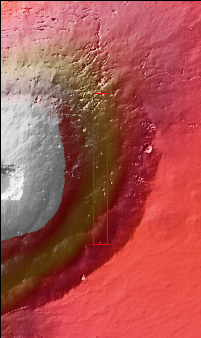
Context imageToday's image shows the eastern flank of Ascraeus Mons. Several tectonic fractures and collapse features, as well as lava flows, are visible in the image. The collapse features vary in shape from circular to linear outlines. The majority of the collapse features don't interact with the surface lava flows, indicating that the collapse features were formed after the main emplacement of lava flows from the summit and near summit vents. Ascraeus Mons is the northernmost of the three aligned Tharsis volcanoes and is the tallest at 18 km (11 miles), for comparison Mauna Kea – the tallest volcano on Earth – is 10 km tall (6.2 miles, measured from the base below sea level).
Orbit Number: 94029 Latitude: 11.7587 Longitude: 257.749 Instrument: VIS Captured: 2023-02-24 15:43
Please see the THEMIS Data Citation Note for details on crediting THEMIS images.
NASA's Jet Propulsion Laboratory manages the 2001 Mars Odyssey mission for NASA's Science Mission Directorate, Washington, D.C. The Thermal Emission Imaging System (THEMIS) was developed by Arizona State University, Tempe, in collaboration with Raytheon Santa Barbara Remote Sensing. The THEMIS investigation is led by Dr. Philip Christensen at Arizona State University. Lockheed Martin Astronautics, Denver, is the prime contractor for the Odyssey project, and developed and built the orbiter. Mission operations are conducted jointly from Lockheed Martin and from JPL, a division of the California Institute of Technology in Pasadena.

